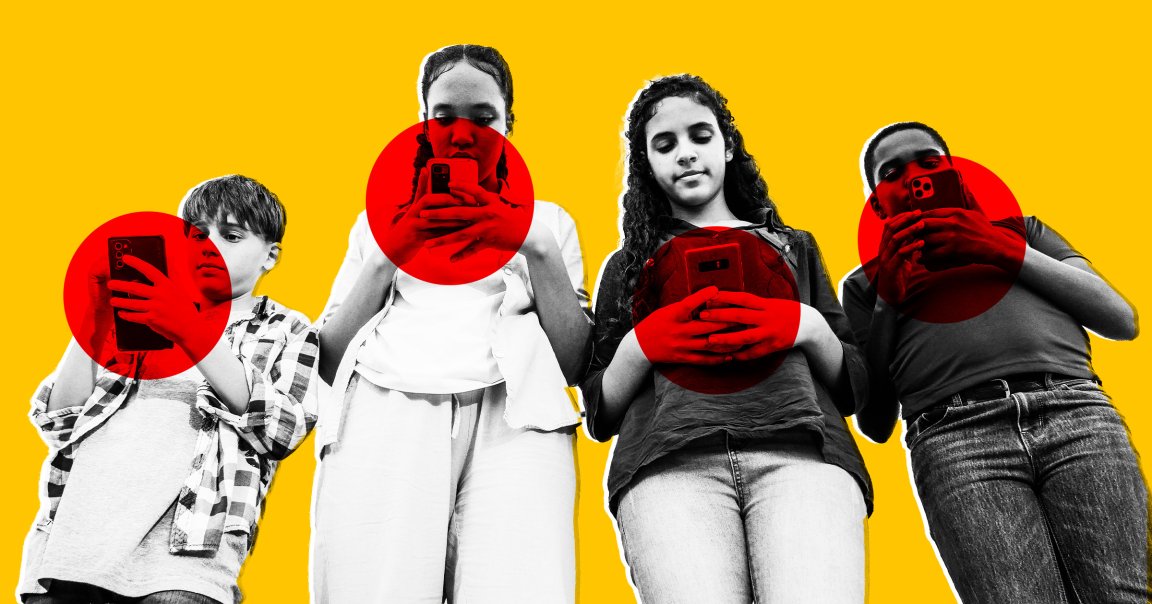
Over the past few years, a huge number of schools in the United States and around the world have banned cell phone use among their students.
It’s a divisive topic, and the effects are only starting to come into focus. Just look at New York State, where governor Kathy Hocul and lawmakers put a ban into the state budget last spring in an effort to give kids a break from distractions at school.
Gothamist spoke to students about their experience with the ban, and the number one takeaway didn’t have to do with anything to do with hot-button topics like social media addiction or cyberbullying. Instead, it was that kiboshing phones is forcing kids to actually talk to each other in meatspace again — and it’s making schools way noisier, for better or worse.
“Sometimes I would take naps in the lunchroom, but now I can’t because of the noise,” 15-year old Queens high school student Jimena Garcia told the site. “But it’s fun.”
That’s a bold contrast, the Gothamist reported, from previous semesters where kids sat in the lunchroom silently on the phones, creating an environment where you could “hear a pin drop.”
“I do like how this phone ban is allowing students to just connect with each other, make new friendships,” Alyssa Ko, the 17-year old class president at Garcia’s school, told Gothamist. “Because some people use their phone to just hide away.”
With some exceptions for students with disabilities or those learning English and needing a translation app, the ban prohibits all internet-enabled devices throughout the entirety of the school day. As of now, at least 31 states and Washington DC have implemented some sort of restrictions on cell phone usage in schools.
Parents have pushed back state for reasons ranging from concern about getting in touch with their kids in an emergency to good old-fashioned helicopter parenting, but teachers have been largely supportive, saying that phones have become an all-encompassing distraction in educational settings.
When educators were surveyed by the New York State United Teachers, for instance, the results were promising. Eighty-nine percent of respondents said the new policies have improved the school environment, 76 percent said class participation has improved, and 77 percent reported more positive social interactions both within classrooms and through hallways.
“Now when we get computers, I actually have to [do] deep research instead of going straight to AI,” another NYC student told Gothamist.
Not all students appreciate the bans, of course. aren’t embraced or appreciated by all. Enakshi Barua, 14, is opposed on principle.
“I feel like the trust isn’t there between the students and teachers,” 14-year-old Enakshi Barua told Gothamist. “So I feel like that should be built instead of banning the phones.”
Perhaps the sweetest of the changes: analog activities are back, like passing notes in class, writing cards to crushes, and taking Polaroid pictures.
“There are just a lot of memories that we make throughout high school that we want to capture,” Ko told Gothamist. “I actually have a lot of Polaroids on my wall.”
More on screen time: Blocking the Internet on People’s Phones for Two Weeks Led to Profound Changes in Mental Health and Attention Span